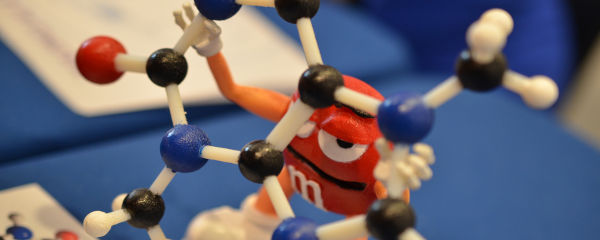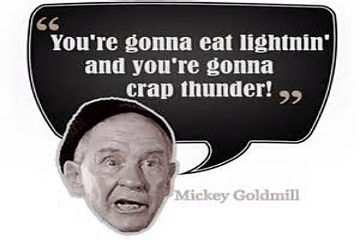What I’ve Learned:
“Glial cells: you’re gonna think lightning; you’re gonna cogitate thunder!”
We can’t all be the star of the show.
Think about it — sports tournaments don’t nominate Most Valuable Plethora. Only one actor in a movie gets to be the headliner, pretty much by definition. And no matter how smart those “meddling kids” are, it’s still the Scooby Doo show.
(And don’t you forget it, Fred, ya scarf-wearing frat-boy bossypants.)
Still, there’s nothing wrong with working in the background. Playing cheerleader for the star. (But not head cheerleader, of course.) Being the best darn supporting actor you can be. That’s true everywhere in life — even in our own brains. Most people think of their skulls being filled — or mostly filled, in some cases — with neurons, the cells we use to think and add and learn and compose bawdy limericks about buckets.
But that’s not quite true. Actually, our headbones are only half — or mostly-half — full of neurons. The other half are filled with something called glial cells, which are not neurons, but do help the neurons do their various jobs. And sometimes more.
Consider Rocky Balboa.
(I know. Not a name often associated with matters of the brain, for good reason. But stick with me here; I can make this work.)
Rocky was, of course, the star of the Rocky movies. Sure, he’d get his bloodied butt handed to him for a while by Ivan Drago or Mr. T. or that shifty CIA dude from Predator, but then he’d train up, grunt some stuff and punch them stupid. So it’s his name on the marquees.
But he didn’t do it alone. His trainer Mickey was there to help him — keep him on track, give him advice and yell gibberish at him every once in a while.
That’s what the glial cells in the brain do, more or less, for their diva neurons. First, the glial cells provide physical support and structure. You can’t box on a playground; you need a gym. So the glial cells make the gym our neurons work out in.
And some types of glial cells wrap around neurons, leaving something called a “myelin sheath” behind. This is like strapping the gloves and shoes onto a boxer — the myelin makes neurons quicker and more efficient. Real float-like-a-butterfly stuff.
But that’s only the beginning; glial cells also provide nutrients for neurons. I don’t know what kind, exactly — oxygen, probably, and vitamins; maybe a glassful of raw eggs on heavy logic days? That sounds right.
Another thing glial cells are important for is keeping neurons away from each other. Like professional fighters — especially Hollywood movie professional fighters — neurons like to get in each others’ faces. Or synapses, I guess. But the point is, they’ll talk trash at each other — unless the glial cells get in there and keep them apart. Because you’ve got to save all that cerebral violence for the ring. Or the SATs.
And there’s more; glial cells help neurons by keeping out distractions. Like infections, for instance. Or dead cells. Sleazy fight promoters. Talia Shire, maybe; I don’t know who’s banging around in your head. But whatever butts in, the glial cells boot it out, so the stars can shine. Sting like a bee, baby.
And just like Mickey — a former fighter himself — there’s evidence that some glial cells might even do their own mental “boxing” in the form of releasing transmitters, just like neurons. Not bad for a few billion has-beens and some never-weres, eh?
So the next time you’re thinking about thinking, or anything brains do, give a nod to the glial cells. Neurons are great and all, but without their glia, they’d be a bunch of bums. Bums, Rock! Bums!!



